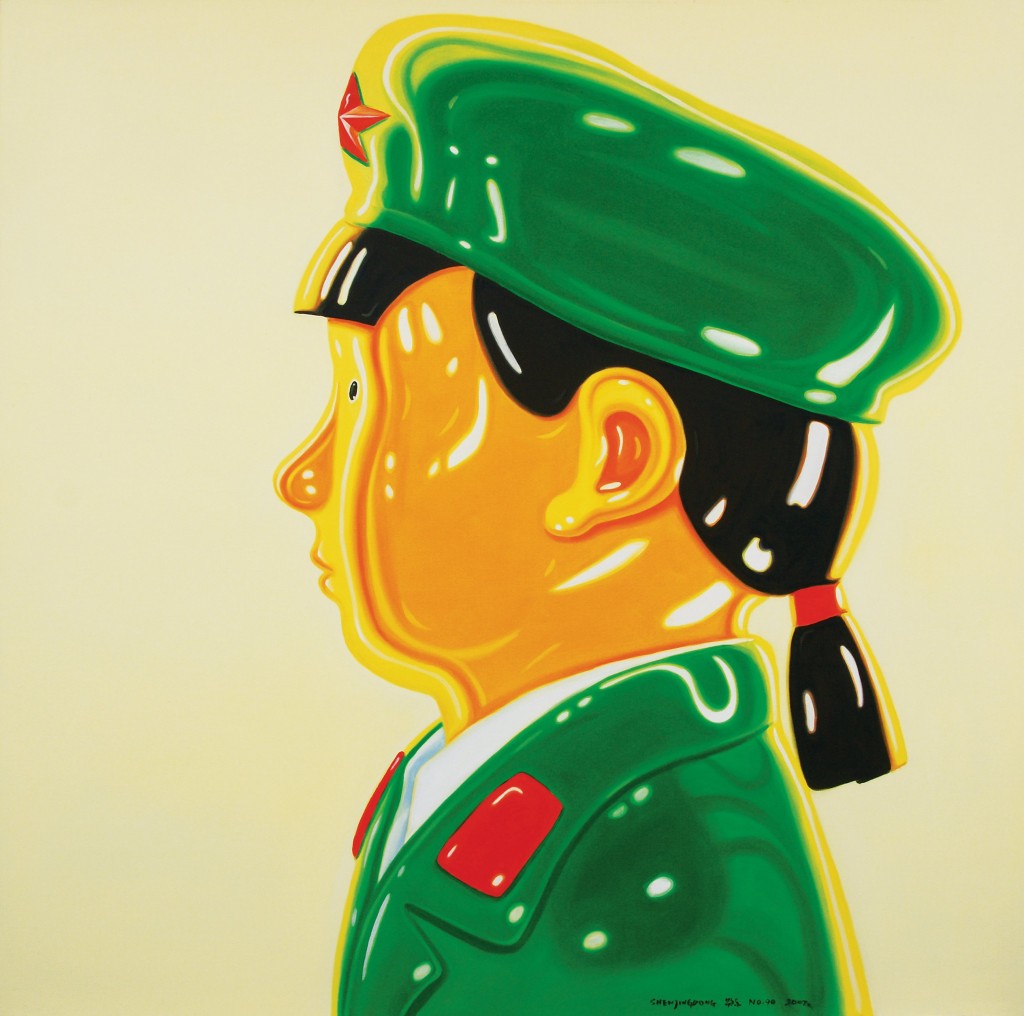
Faces of a new China
The dizzying speed that Chinese contemporary art became popular, and profitable, is head-spinning. Paralleling the rise of the juggernaut economy, Chinese art went from piquing a niche interest in the 1980s to hauling in some astronomical sums at auction by the end of the 2000s. Like their contemporaries in film, artists emerging from the dark days of the cultural revolution have so much to say, and in such unique ways. Yue Minjun’s ironic, sad but supposedly laughing faces became the face of a new China, as did some of the portraits of Ai Weiwei, recently jailed in China for subversive acts. Around them arose “Cynical Realism” and the “Political Pop” movements, which in turn influenced a group of students coming of age in the hyper-kinetic 21st century Beijing and Shanghai.
At the Patricia & Phillip Frost Art Museum, “East/West Visually Speaking” highlights some recent Chinese works, mostly from 2007 and on, which reveal that rapidly changing world with all its collisions of old and new, East and West. Most of these pieces are in the familiar, new contemporary Chinese style — often figurative, emphasizing bodies and portraits, coming back time and again to the image of Mao — and referencing Western implants, such as Coca-Cola and McDonald’s.
Tang Zhigang’s series of paintings, called “Chinese Fairytale.,” are especially moving. There are some very unhappy looking toddlers grouped together in a pool — are they getting lost in this collective water daycare? In another, one lone child is in a run-down pool, struggling to stay afloat under, yes, a Mao-like portrait of a different child.
The Luo Brothers have a series of porcelain sculptures, paintings and embroidered works called “Welcome the Famous Brands to China.” As the literal title invokes, the materialistic world pops up all over, but there are references to much older Chinese traditions, as the materials suggest. One porcelain sculpture depicts two babies riding a colorful dragon, and holding onto a hamburger and soda cans. A joyride. Unlike the typical Western depiction of children as innocents, something is tipped on its head in these works.
Once, long ago, Chinese art was known for its carvings, calligraphy and contemplative landscapes. After the revolution, the Eastern-flavored Socialist Realism erased all subtly, and today’s artists try to address that with a new materialism piled on top. The 40 works here tell that tale. One problem with rapid growth in artistic output, however, is that themes and imagery can get repetitive, as can also be seen here. Yet the energetic roll that China is on is palpable with “East/West,” and we should be seeing, and experiencing, much more of it.
“East/West Visually Speaking” runs through Sept. 11 at the Frost Art Museum, 10975 S.W. 17th St., Miami; thefrost.fiu.edu.
Recent Content
-
Artsarticle ·
-
Artsarticle ·
-
Artsarticle ·

